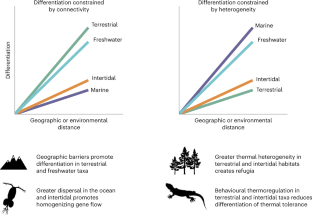UCサンディエゴの研究者らが、小腸の代謝物を経時的にモニターするセルフパワー型の摂取可能なセンサーシステムを開発 UC San Diego Researchers develop a self-powered ingestible sensor system designed to monitor metabolites in the small intestine over time
2022-11-30 カリフォルニア大学サンディエゴ校(UCSD)
このバイオ燃料駆動型のセンサーは、小腸にその場でアクセスできるため、グルコースのモニタリングが容易になるとともに、継続的に測定結果を得ることができる。この測定は、栄養学的研究、様々な病気の診断と治療、肥満防止などに大きな影響を与える消化管の健康状態を総合的に把握するための重要な要素になる。
実験では、電池不要のバイオセンサー技術によって、摂取から14時間後の豚の小腸内のグルコースレベルを継続的にモニターし、5秒ごとに2~5時間測定することができた。
このバイオセンサーは、長期間にわたる連続的なデータの読み取りを可能にする。また、このプラットフォームは、小腸のマイクロバイオームを研究する新しい方法の開発にも利用できる。スマートピル」のアプローチは、小腸をモニターする方法をよりシンプルかつ安価にすることにつながり、将来的には大幅なコスト削減につながる可能性がある。
この「スマートピル」は、電池の代わりに、ブドウ糖を燃料とする無害な燃料電池で駆動している。
研究チームは、人体磁気通信を利用した電力-周波数変換方式により、エネルギーハーベスティング、バイオセンシング、無線遠隔測定を行う回路に、自己発電型グルコース・バイオセンサを組み込むことに着眼した。
グルコース・バイオ燃料電池(BFC)は、グルコース濃度の変化を測定しながら、同時に動作中の電力を得ることができるため、電池を使わないユニークな動作が可能になる。また、エネルギー効率の高い磁気人体通信(mHBC)方式は、40~200 MHzの周波数帯で動作し、時間分解された送信信号を受信する。
<関連情報>
- https://today.ucsd.edu/story/a-new-self-powered-ingestible-sensor-opens-new-avenues-for-gut-research
- https://www.nature.com/articles/s41467-022-35074-y
消化管内代謝物のリアルタイムin situモニタリングのための自己発電型摂取可能な無線バイオセンシングシステム A self-powered ingestible wireless biosensing system for real-time in situ monitoring of gastrointestinal tract metabolites
Ernesto De la Paz,Nikhil Harsha Maganti,Alexander Trifonov,Itthipon Jeerapan,Kuldeep Mahato,Lu Yin,Thitaporn Sonsa-ard,Nicolas Ma,Won Jung,Ryan Burns,Amir Zarrinpar,Joseph Wang & Patrick P. Mercier
Nature Communications Published:01 December 2022
DOI:https://doi.org/10.1038/s41467-022-35074-y

Abstract
Information related to the diverse and dynamic metabolite composition of the small intestine is crucial for the diagnosis and treatment of various diseases. However, our current understanding of the physiochemical dynamics of metabolic processes within the small intestine is limited due to the lack of in situ access to the intestinal environment. Here, we report a demonstration of a battery-free ingestible biosensing system for monitoring metabolites in the small intestine. As a proof of concept, we monitor the intestinal glucose dynamics on a porcine model. Battery-free operation is achieved through a self-powered glucose biofuel cell/biosensor integrated into a circuit that performs energy harvesting, biosensing, and wireless telemetry via a power-to-frequency conversion scheme using magnetic human body communication. Such long-term biochemical analysis could potentially provide critical information regarding the complex and dynamic small intestine metabolic profiles.

